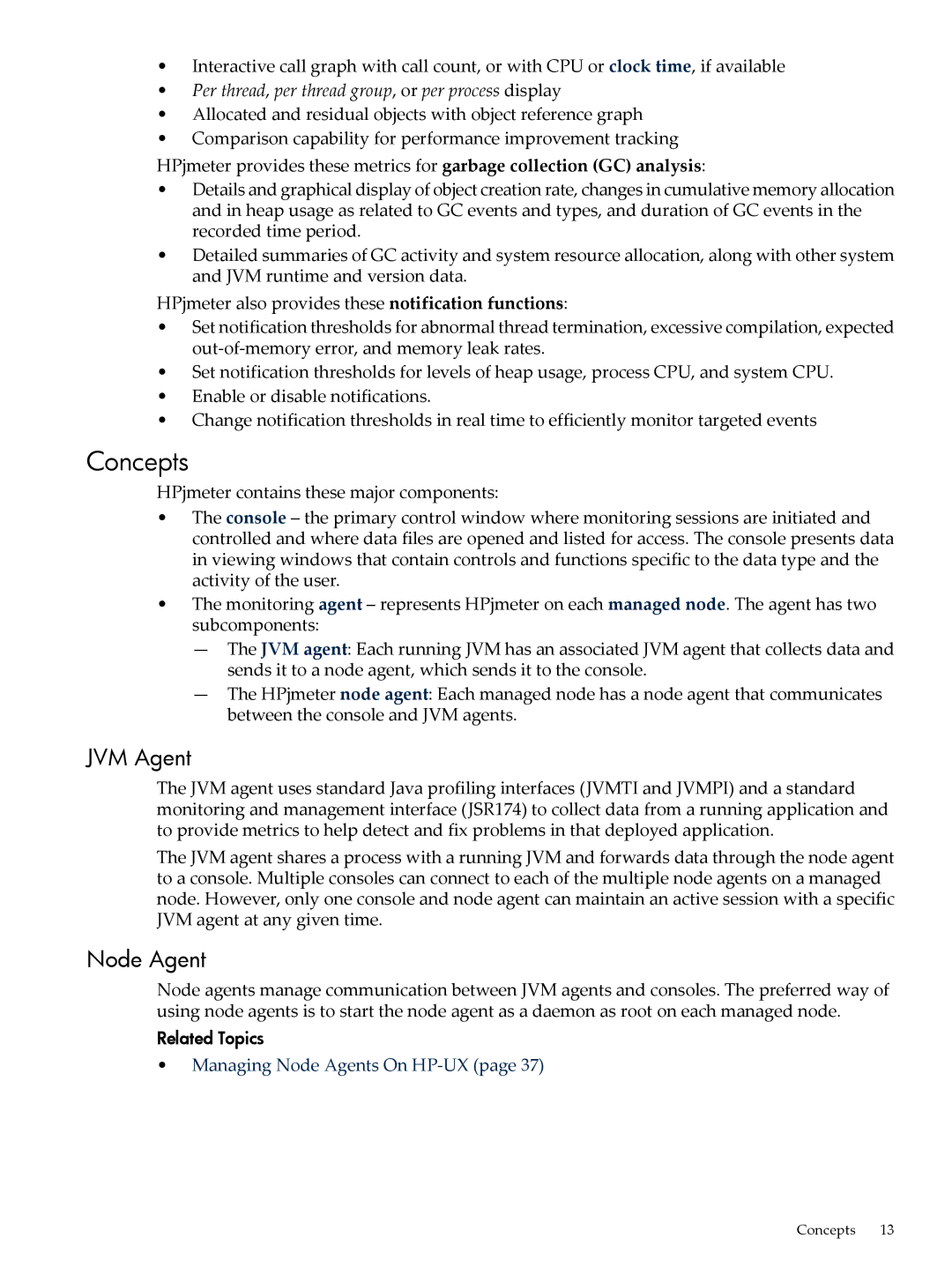•Interactive call graph with call count, or with CPU or clock time, if available
•Per thread, per thread group, or per process display
•Allocated and residual objects with object reference graph
•Comparison capability for performance improvement tracking
HPjmeter provides these metrics for garbage collection (GC) analysis:
•Details and graphical display of object creation rate, changes in cumulative memory allocation and in heap usage as related to GC events and types, and duration of GC events in the recorded time period.
•Detailed summaries of GC activity and system resource allocation, along with other system and JVM runtime and version data.
HPjmeter also provides these notification functions:
•Set notification thresholds for abnormal thread termination, excessive compilation, expected
•Set notification thresholds for levels of heap usage, process CPU, and system CPU.
•Enable or disable notifications.
•Change notification thresholds in real time to efficiently monitor targeted events
Concepts
HPjmeter contains these major components:
•The console – the primary control window where monitoring sessions are initiated and controlled and where data files are opened and listed for access. The console presents data in viewing windows that contain controls and functions specific to the data type and the activity of the user.
•The monitoring agent – represents HPjmeter on each managed node. The agent has two subcomponents:
—The JVM agent: Each running JVM has an associated JVM agent that collects data and sends it to a node agent, which sends it to the console.
—The HPjmeter node agent: Each managed node has a node agent that communicates between the console and JVM agents.
JVM Agent
The JVM agent uses standard Java profiling interfaces (JVMTI and JVMPI) and a standard monitoring and management interface (JSR174) to collect data from a running application and to provide metrics to help detect and fix problems in that deployed application.
The JVM agent shares a process with a running JVM and forwards data through the node agent to a console. Multiple consoles can connect to each of the multiple node agents on a managed node. However, only one console and node agent can maintain an active session with a specific JVM agent at any given time.
Node Agent
Node agents manage communication between JVM agents and consoles. The preferred way of using node agents is to start the node agent as a daemon as root on each managed node.
Related Topics
•Managing Node Agents On
Concepts 13
